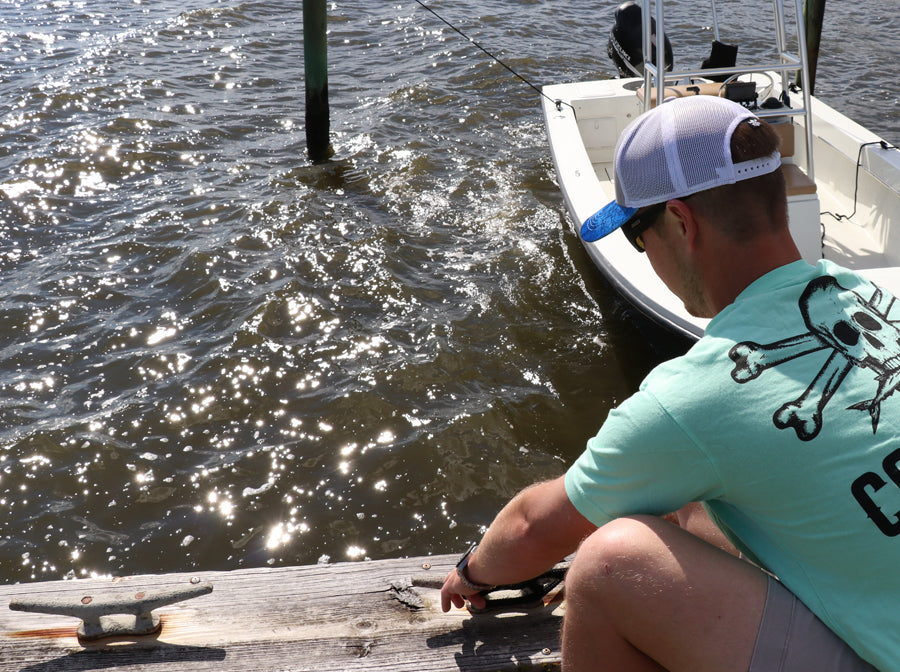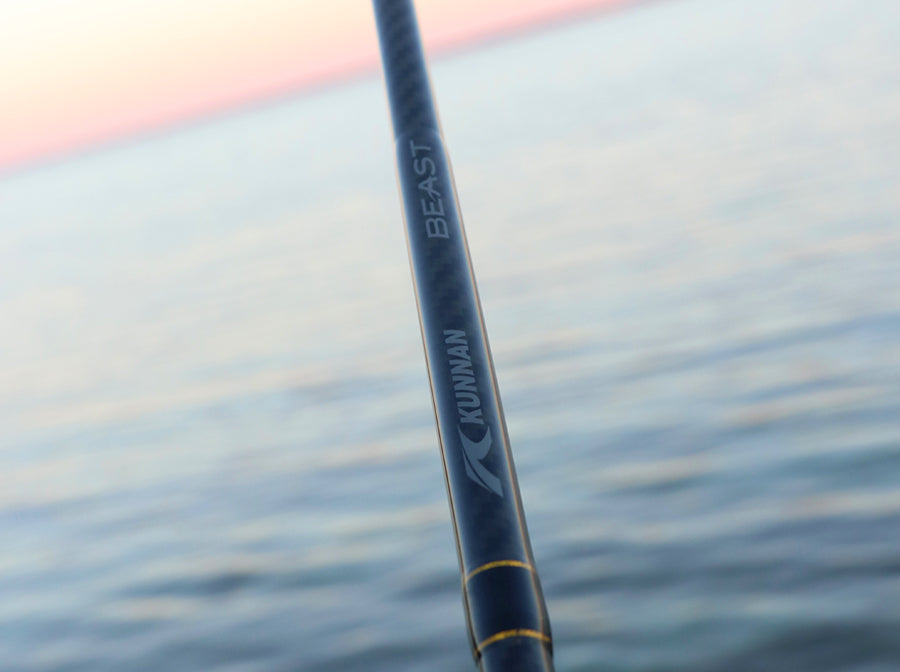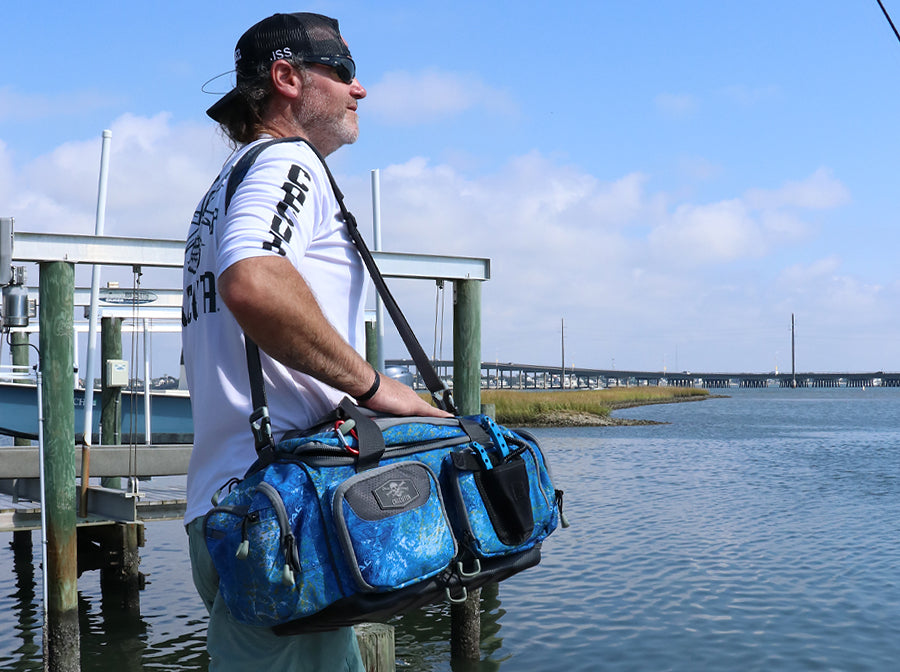Longer days and warmer temperatures signal the arrival of our favorite season—fishing season! If you’re like us, you have been itching to get back on the water—but is your fishing boat ready? Before you head to the boat launch, take some time to inspect and prep your watercraft. A few hours of pre-season prevention will help ensure fun and safe fishing trips this year. We’ve compiled a checklist to help get you started.
Charge the Battery
A dead battery can keep you stuck at the dock or stranded on the water. To avoid this common headache, test your battery with a meter or have it checked at a local marina or auto parts store prior to fishing season. The deep cycle battery may need a charge, some extra fluid (battery acid or distilled water will work) or it may need to be replaced. Remove any corrosion and deposits from the terminals, and survey the battery box for damage. Also, examine your onboard battery charger to ensure it’s working properly.
Inspect the Electronics
If the battery is in proper operating condition, inspect the boat’s electronics next. Start with the multifunction display (MFD) if your boat has one. Turn on the ignition and observe the engine monitors, including the fuel and temperature gauges. If any warning lights come on or alarms sound, refer to the owner’s manual. Depending on the problem, it may require professional servicing. Next, check your GPS and fish finder or depth finder. Don’t forget to test your VHF radio. Does everything seem to be working?

Examine your boat’s fish finder and other electronics prior to fishing season.
Check Out the Outboard Motor
It’s usually best to have outboard motors professionally serviced during the off season. Doing so will help ensure the motor is serviced correctly, tuned properly and ready to go when fishing season arrives. If you perform your own maintenance, be sure to inspect the fuel filter, fuel line and clamps. Whatever you do, don’t wait until the day of the first fishing trip to start the motor. Take the time to test it prior to the season. Use a motor flusher to prevent overheating the engine. If your boat is equipped with a trolling motor, test that as well.
Clean the Coolers and Livewell
Even if you gave them a good scrubbing after the last outing, boat coolers and livewells tend to accumulate dust and debris during the off season. Now is the time to thoroughly clean them. While you’re at it, clean your boat’s bilge area, too. Just remember: Never use soap in a livewell that will hold live bait. After cleaning, inspect your bilge, livewell and fish coolers for damage. Do the aerator and bilge pump still work? Consider replacing damaged and old coolers with a newer high-performance cooler that will provide better ice retention.
Personal Flotation Devices
Personal flotation devices (PFDs), such as lifejackets and throw cushions, are required by law in most places. Double-check to make sure your boat has a USCG-approved type I, II or III PFD for everyone onboard. Also, scan each of the lifejackets, throw cushions and other PFDs for damage. Replace any that are ripped, frayed or torn—or risk being fined during a vessel inspection.

Undamaged life jackets are essential for safety and required by law.
Inspect the Fire Extinguisher
Give your boat’s fire extinguisher a quick visual check. The needle on the pressure gauge should be in the green “Full” area. If not, have the fire extinguisher serviced or replaced immediately. A fire extinguisher can save your life and protect your fishing boat from damage. It’s also one of the first things that the Coast Guard (USCG), wildlife officers and marine safety officers will examine during a vessel inspection.
Navigation Lights and Distress Signals
Even if you’re not planning to be on the water at night, make sure your boat’s anchor and navigation lights are working. You also need both daytime and nighttime visual distress signals onboard as well as a USCG-approved bell, horn or whistle. These safety devices are required by law, and they could save your life.
Look Over Dock Lines and Anchor Lines
Damage to dock lines and anchor lines can often go unnoticed when you’re focused on fishing. Take time before the season starts to inspect each of your dock lines and anchor line for abrasion. Replace any line and ropes that are damaged.
Inspect dock lines and anchor lines for damage before hitting the water.
Update the Boat Registration
Don’t get fined for an expired vessel or watercraft registration. Make sure your boat’s registration is up to date. Remove expired decals and apply the new registration sticker to your boat prior to launching.
Inspect Your Boat Trailer
Before you hit the road, take time to thoroughly survey your boat trailer. Check the tire pressure and look for wear on the sidewalls and tread. Grease the wheel hubs and consider adding bearing protectors if your trailer isn’t already equipped with them. Test the trailer’s lights and brakes. Is the license plate attached and up to date? Missing or expired tags can sink your fishing trip before you even get to the water.
Don’t Forget the Plug
Finally, check—and double-check—your boat’s plug. It’s an easily overlooked piece of equipment that will have catastrophic consequences if forgotten. In fact, it’s a good idea to keep an extra plug onboard your boat. You never know when you may need it.
More Resources:
Pre-Season Study: 6 Tips to Improve Your Fishing IQ
7 Tips to Prep Your Fishing Gear for the Spring Season
Performance Sunglasses: Your Best Defense Against the Sun
Best Fishing Tackle Storage Systems
Strategies to Optimize Your Fishing Tackle Storage




